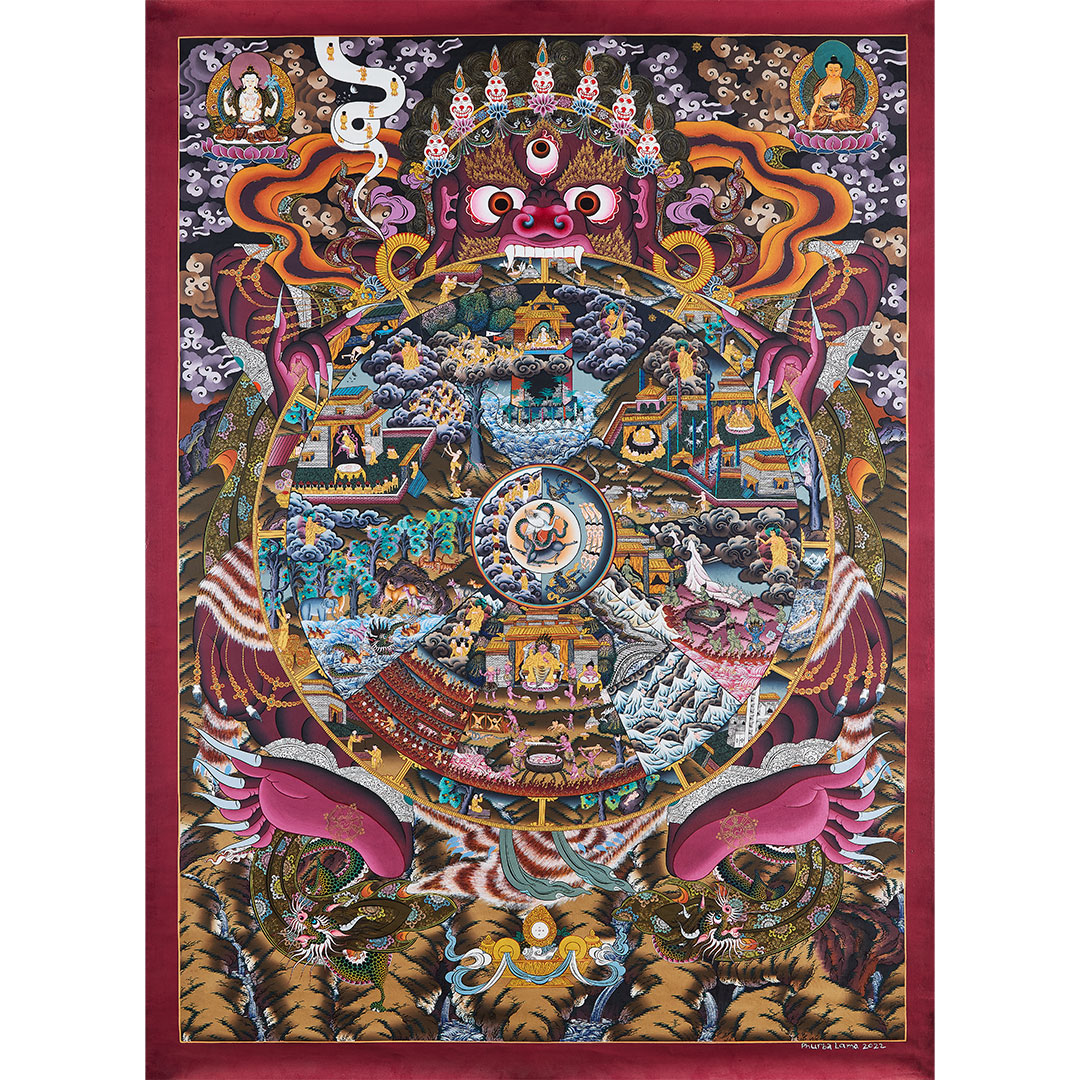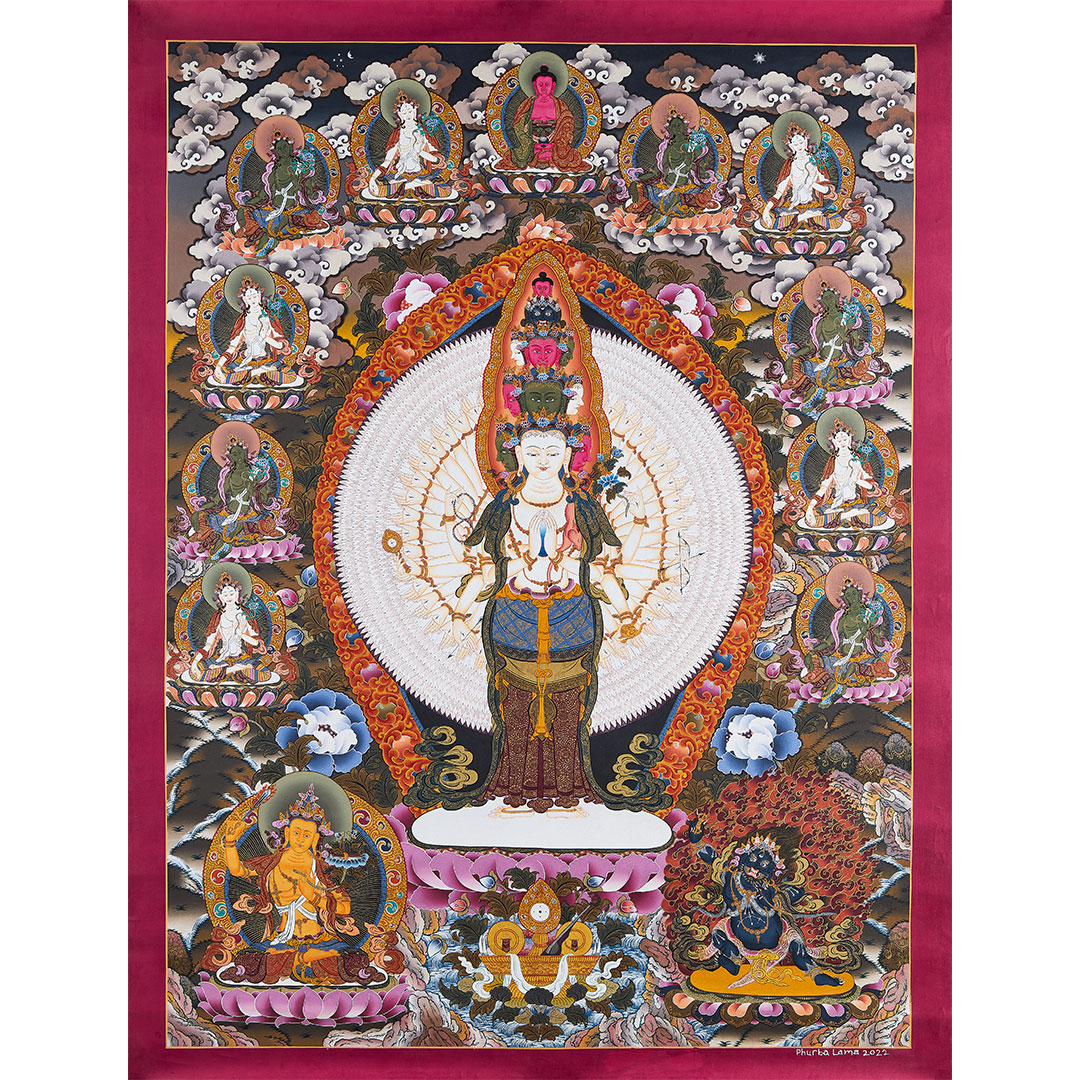Thangka
In classical Tibetan, the word "thangka" means "thing that one unrolls”, is a Tibetan Buddhist hand-made paintings on cotton, or silk appliqué and often painted with mineral colours and gold dust, usually depicting a Buddhist deity, scene, and lives of Buddha . It is a style that developed in the 7 th century in parts of Himalayan India, Tibet and Nepal. Thangkas often have elaborate compositions including many very small figures and a central deity is often surrounded by other identified figures in a symmetrical composition. Thangkas are considered religious art and are believed to be a source of positive energy and induce a sense of calm. The most prominent subject is the Bhavachakra (Wheel of Life) which is how the Art of Enlightenment is visually represented and The Thousand Arms of Compassion.
Phurba Lama
Wheel of Life
Phurba Lama
Thousand arms of compassion



